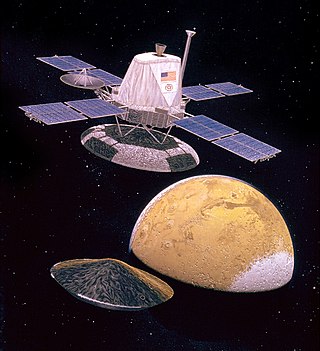Viking program
pair of NASA space probes sent to Mars From Wikipedia, the free encyclopedia
Remove ads
The Viking program was a NASA mission that sent two spacecraft to the planet Mars. These spacecraft were called Viking 1 and Viking 2.[3] Each spacecraft was made of an orbiter and a lander. The orbiters took pictures of Mars from their orbit and sent information to Earth. The landers gathered scientific data on the surface of the planet.
Both Viking spacecraft were launched in 1975 and both reached Mars in 1976. Scientists chose landing places for both landers from the pictures that the orbiters had taken. Then the landers were released from the orbiters and they went down to their landing places. The orbiters continued to take pictures while the landers studied the surface of the planet and did other things. All of the spacecraft, including both orbiters and both landers, kept working for longer than they had been planned to. Eventually, they broke down. Viking 2 Orbiter stopped working in 1978, Viking 1 Orbiter and Viking 2 Lander in 1980, and Viking 1 Lander in 1982.
The Viking program was the most expensive and difficult mission ever sent to Mars. The program cost a total of US$1 billion. The program was very successful. Most of the knowledge about Mars until the late 1990s came from the Viking mission.
Remove ads
References
Other websites
Wikiwand - on
Seamless Wikipedia browsing. On steroids.
Remove ads

